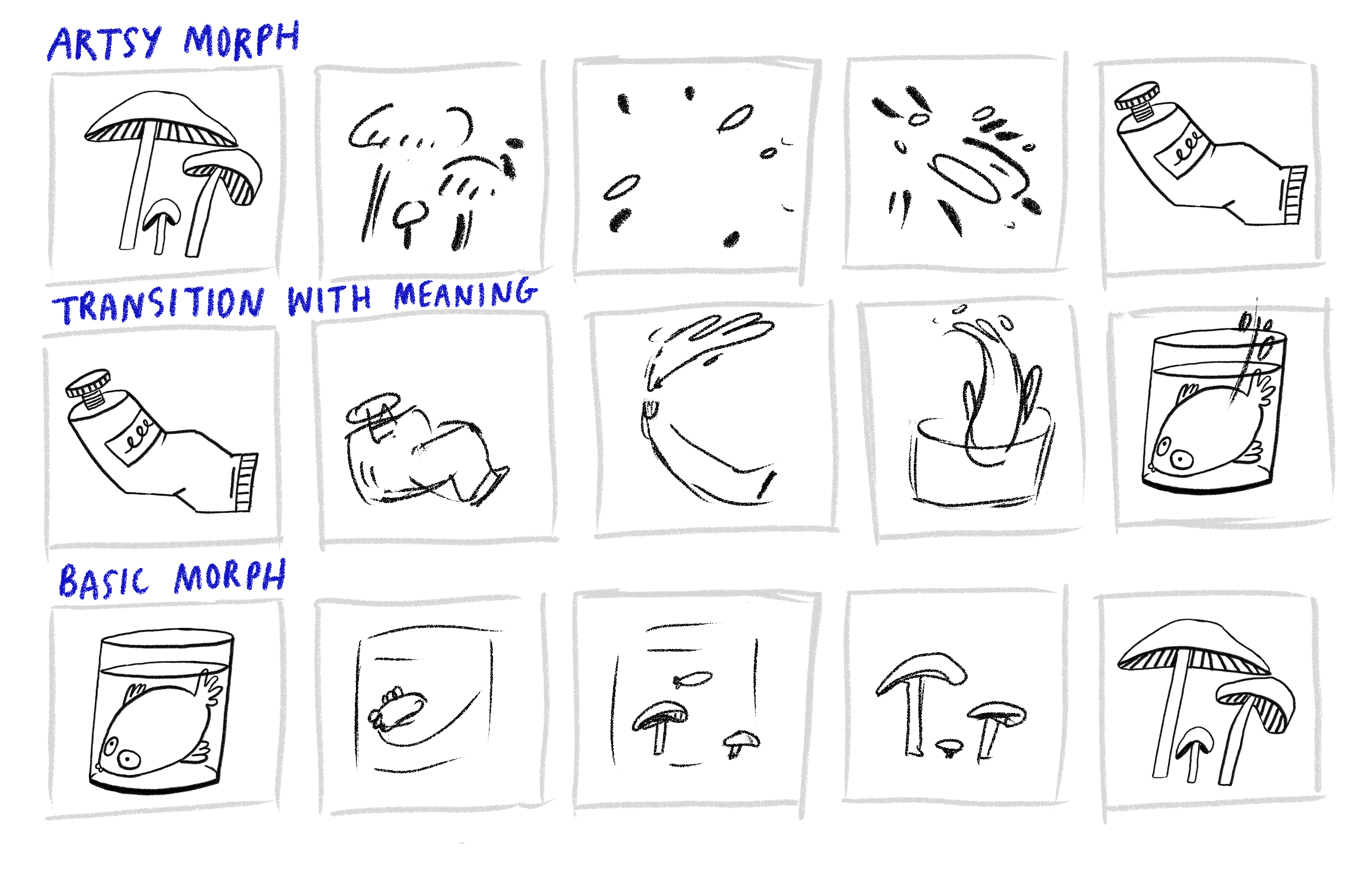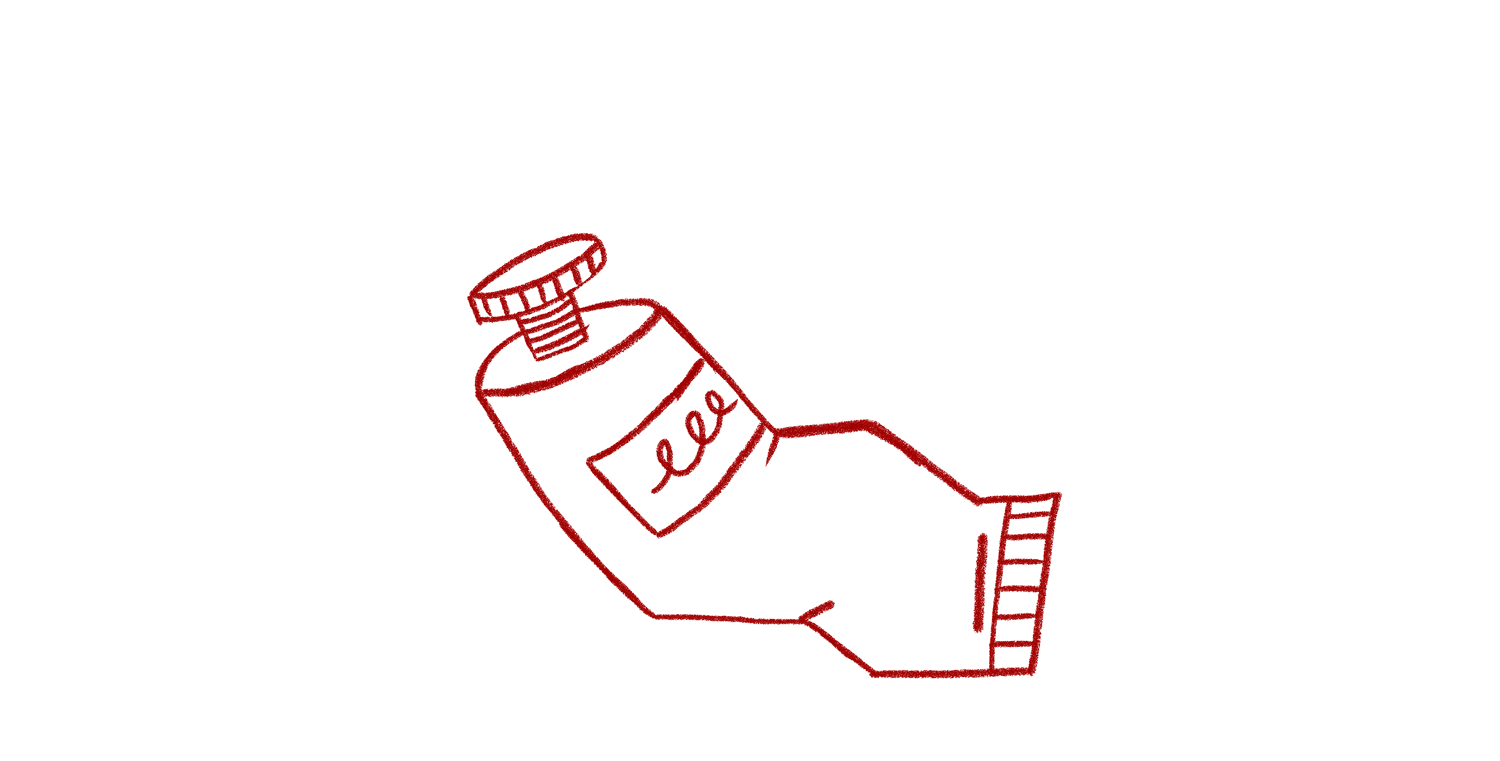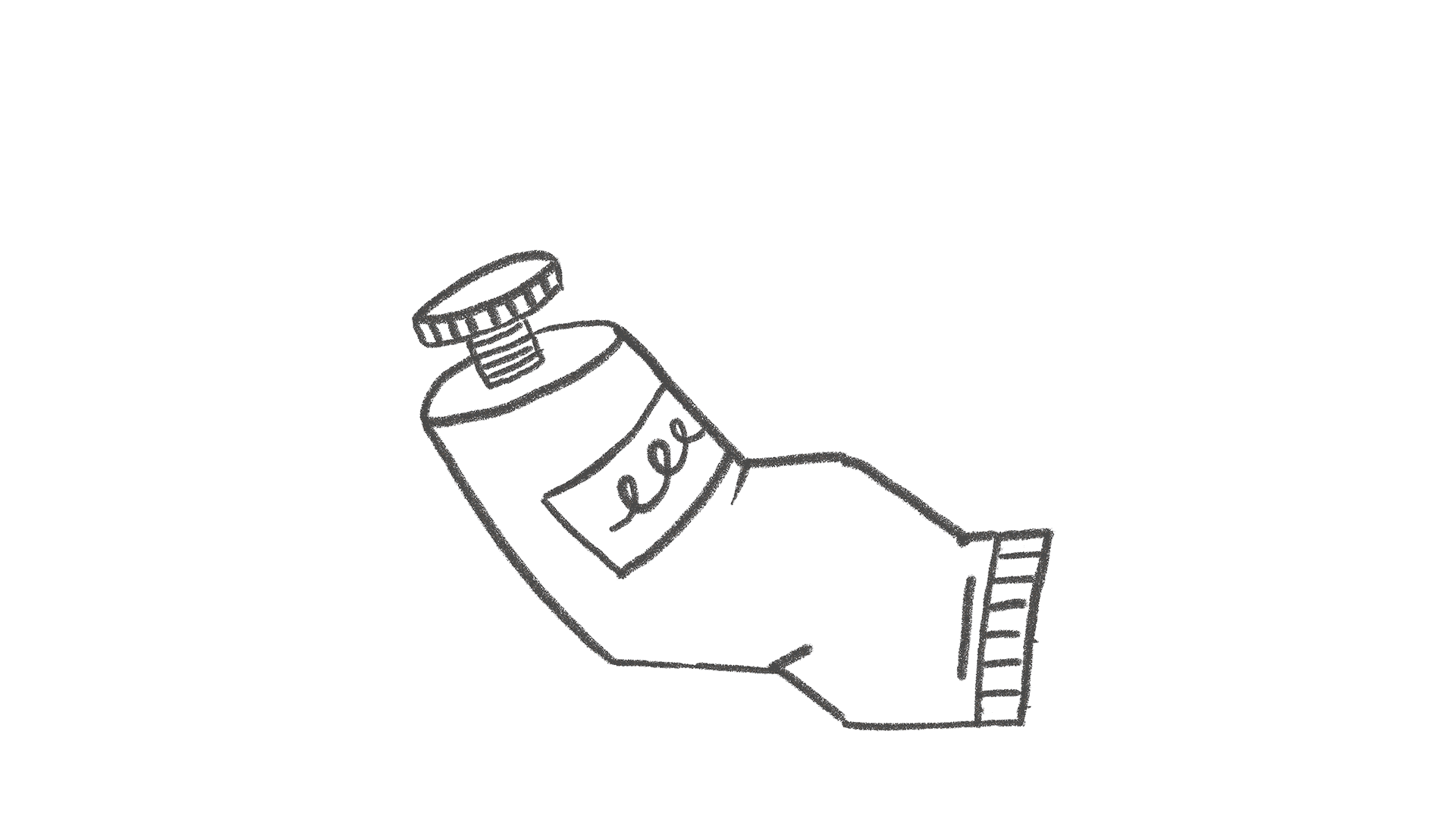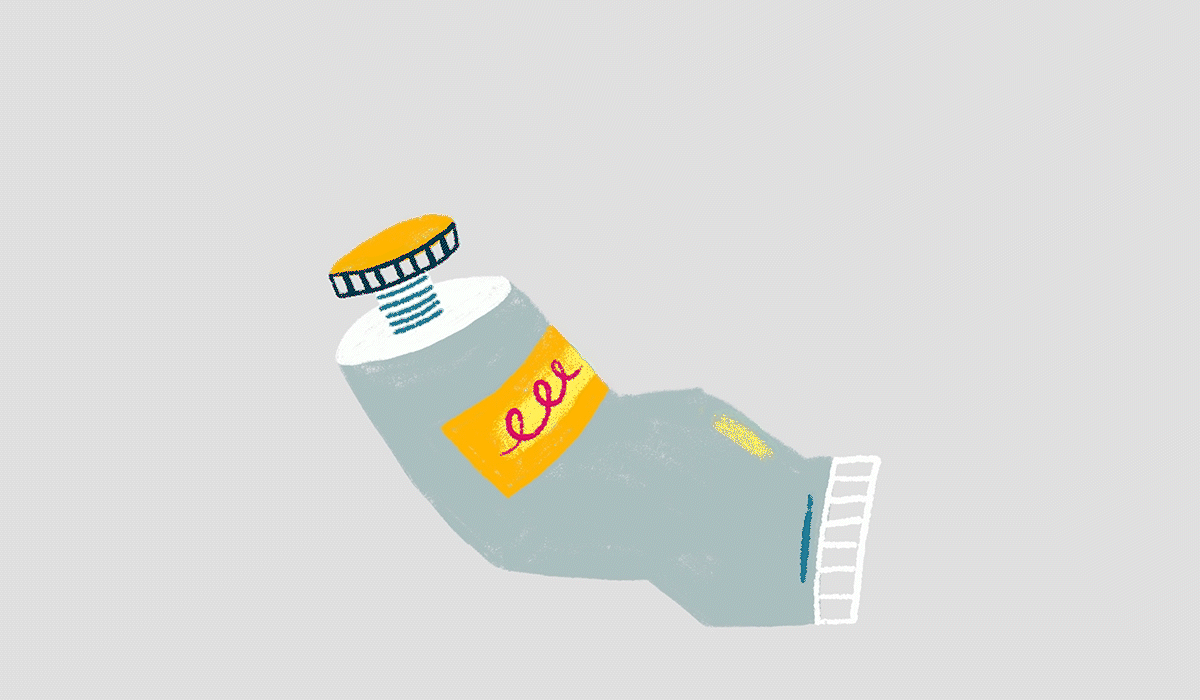The Stages of Animation

An animation is done in 4 stages. Though it’s tempting to go and add beautiful colours and brush work early on, it’s really important that you get the building blocks right before you animate the details, make the movement smooth or add colour. This will save you a lot of time and energy (every animator has ignored this advice at some point and really regretted it later)!
1 - Planning & Storyboarding

We need to have an idea of what story we’re trying to tell before we animate it. When we’re animating a full scene we want to storyboard it first with some quick thumbnail sketches. If we’re only animating something simple (or doing an exercise) we don’t need to plan it quite so much.
We often also do a “style frame” or “concept design” at this point too, so we know what the final aesthetic will be. We won’t get round to colouring for a while, but it helps to have a reference (and a beautiful goal to aim for).
2 - Rough Animation - The 'Key' Frames

The first things we animate are the most important frames of a scene. We might only have one or two drawings per second, but these tell the story. We can perfect the timing and basic movement without spending days or weeks on it - animation is all about planning and being strategic with our time.
When making a film we do this for the whole project before we animate at all! We call this an ‘animatic’ - it might be one drawing every few seconds but it helps us get a sense of whether the pacing, storyline and composition works.
3 - Linework

This is where we develop the animation, get the movement smooth and start to add smaller details. We only work with outlines here, no colours or fills, as we want to focus on the movement. We often call this stage “inbetweening”. It can be quite slow, so we only start this process once we’re sure the rough animation is the best it can be. (We often draw each element of the animation in a different colour to help distinguish the many parts whilst animating.)
4 - Colouring & Clean-Up

Once our linework is finished we can colour in. We also call this “clean-up” because you are cleaning up the linework (which can often be a bit messy and sketchy). This process is a bit laborious but quite therapeutic - it’s when we get through a lot of podcasts. The style is totally up to you!
(When you’re working on a bigger project, such as a full film, you would also composite the animation afterwards, which would be considered a 5th stage. This is where you bring your animation into other software, such as After Effects, and piece the different scenes or elements together.)
This clip is from a trailer I created for Julia Shaw's book 'Making Evil' and shows the different phases that one scene will go through.